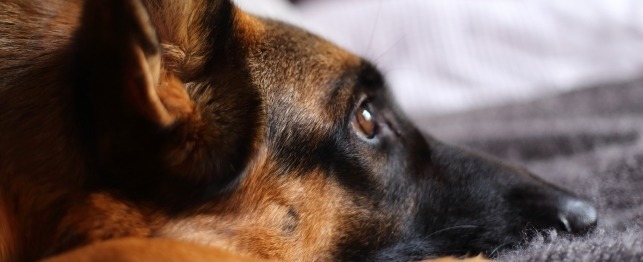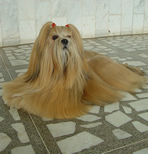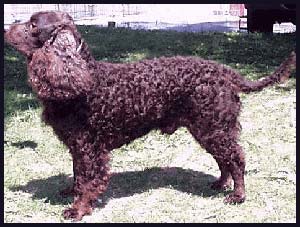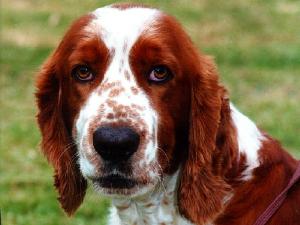
Dogs
According to Matthew Cowley, in his article, "Canine Clowns," a boxer is all that is good in a dog. He is "a laugh a minute, lives life to the fullest, a maximum velocity version of canine slapstick. But he is also a sympathetic soul, a shoulder to cry on, a confidante."
Indeed, boxers are friendly outgoing people dogs. They can become so happy that their whole pelvis moves when they wag their tails. Popular in the United States since the 1940s, the boxer is a wonderful family dog who got his name from his habit of beginning a fight by standing on his hind legs and boxing with his front paws.
The boxer has been one of the top breeds based on the American Kennel Club (AKC) tallies.
Several theories exist regarding the origin of the boxer. One theory, from the 1800s, maintains that the boxer was developed in Germany as a cross between the mastiff-type bullenbeisser and English bulldog. One of these first boxers was the pure white "Blanka." Considered an instrumental dog in the development of the breed, Blanka gave birth to a litter of puppies. One of her daughters, "Meta von der Passage" became an important member of the boxer pedigree. It is thought that nearly all boxers can be traced back to Meta.
Another theory is not so precise. It claims that the boxer is a much older breed, developed from fighting dogs of Tibet.
Regardless of their origin, boxers are working dogs and was one of the first breeds in Germany to be trained as police dogs. They were also used in the previously popular sport of dog fighting. Their courage and bravery led them to be used to run messages on the battlefields during World War I and World War II.
First registered with the AKC in 1904, the boxer did not become popular with American families until the 1940s.
The boxer is a medium sized, square built dog with a noble appearance. He combines strength and agility with elegance and style. The breed has a short back, strong limbs and a short square muzzle with a protruding lower jaw and facial wrinkles. His well developed muscles are hard and appear smooth under taut skin. Most boxers in the United States have docked tails and cropped ears but in some countries, these cosmetic procedures are outlawed (one or both practices).
The hair coat is short, shiny and lies smooth and tight to the body. It can be brindle, fawn or brown, with or without white markings. Completely white boxers are not common since breeders typically cull them due to their high risk of deafness.
The adult boxer stands 21 to 25 inches at the shoulder and weighs 65 to 70 pounds.
The boxer is the ultimate people dog. He is deliberate and wary with strangers but curious, and he will exhibit fearless courage if threatened. Boxers can adapt to nearly any environment, as long as they are with people.
Boxers are very intelligent but can be boisterous. For that reason, obedience training is a must. The breed enjoys training and learns easily. Some have worked as guide dogs as well as guard dogs.
The boxer is a friendly breed, devoted to his family. His temperament is fundamentally playful, yet he is patient and stoical with children. He is tolerant of their antics and loves to play. He is a natural protector and, if trained, can be a good watch and guard dog. Without training, some boxers tend to be too friendly and would rather lick and play with an intruder instead of guarding.
Boxers are low maintenance but they require consistent exercise. Their short hair coat requires minimal grooming. Though they are excellent family pets, they tend to fight among themselves, especially if the other family boxers are the same sex. The most significant concern regarding the boxer is the high rate of cancer compared to other breeds.
 Is a German shepherd Right for You? Survey Results from German shepherd Owners
Is a German shepherd Right for You? Survey Re
Is a German shepherd Right for You? Survey Results from German shepherd Owners
Is a German shepherd Right for You? Survey Re
 Lhasa Apsos: A guide to dogs and puppies of the Lhasa Apso breed
The Lhasa Apso!
The Lhasa Apso is a handsome dog and is als
Lhasa Apsos: A guide to dogs and puppies of the Lhasa Apso breed
The Lhasa Apso!
The Lhasa Apso is a handsome dog and is als
 Is a Labrador Retriever Right for You? Survey Results from Lab Owners
Is a Labrador Retriever Right for You? Survey
Is a Labrador Retriever Right for You? Survey Results from Lab Owners
Is a Labrador Retriever Right for You? Survey
 American Water Spaniel
American Water
American Water Spaniel
American Water
 Welsh Springer Spaniel
Welsh Springer
Welsh Springer Spaniel
Welsh Springer
Copyright © 2005-2016 Pet Information All Rights Reserved
Contact us: www162date@outlook.com